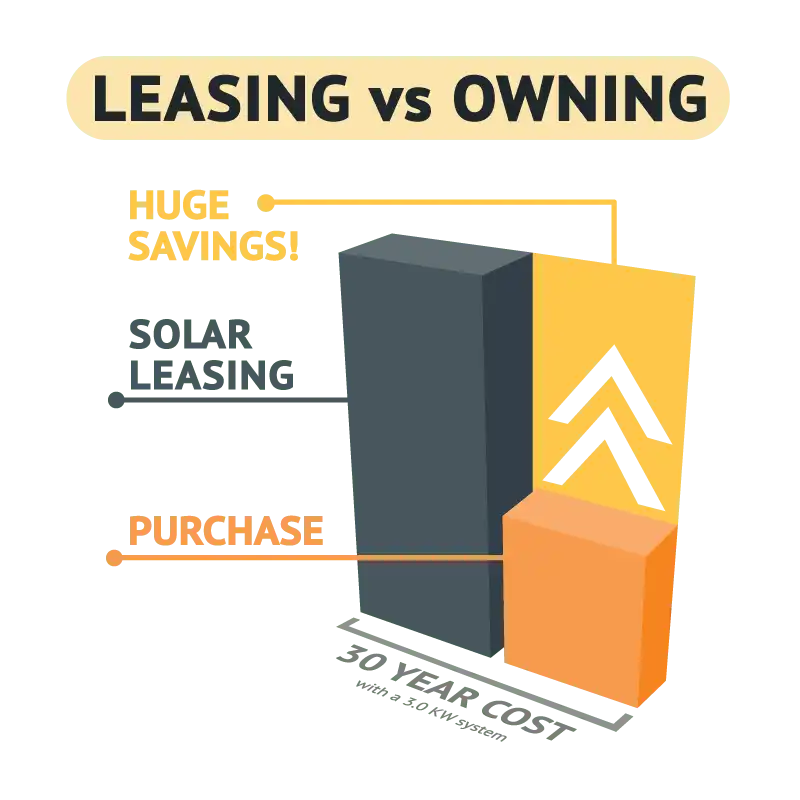SOLAR PROS Many Homeowners find that owning their roof top solar (PV) system is a better long-term solution. They may.
Menu
Should you buy your solar panels or lease your solar panels? When it comes to buying solar panels, as with any big investment, you want to be sure you have all the facts so you can make the best decision when you make your purchase. And when it comes to solar, one of the biggest questions is whether to buy or lease your solar panel system.
With advancements in technology, government incentives such as tax credits, and a growing competitive market, buying your solar system is quite affordable. Some states even offer cash rebates to purchasers for their solar panels! Owning your system outright will give you great overall savings. In addition to that, your solar system will increase your home value, which gives you more sellers’ power if you ever need to move. However, leasing can also be an excellent choice in the right situation. You don’t have to save up to pay for them or take out a loan. And your leasing company is responsible for any maintenance that your solar panel system may require.

Leasing solar panels are much different than buying your own system. When leasing a solar panel system, you allow a third-party supplier to install their panels on your rooftop, typically for 20-25 years. The third-party owns the solar panels and thus receives all government subsidies and tax benefits, and you pay them a monthly fee. After a certain amount of time, you would usually have the option of purchasing the solar panels yourself.
You receive none of the incentives or credits, you would just buy solar panels. And usually, it’s a 20-25 year-long lease, which means that if you ever need to move you either have to find someone willing to take over the solar lease when they move into the house, or you have to pay a break fee to the leasing company. However, because you didn’t take out a solar loan, or use up a chunk of your savings, you still save overall by going solar. You get the benefits of reducing your electric bill while having a single lease payment that will not increase over time.
We’ve put together this handy chart that highlights the biggest differences between buying solar panels and leasing solar panels:
SOLAR PROS Many Homeowners find that owning their roof top solar (PV) system is a better long-term solution. They may.
How Can You Cope with Budget Fluctuations? You know your business better than anyone, especially when it comes to resources.
You’ve heard that solar energy is good for the environment, but have you ever wondered why or how? In this.